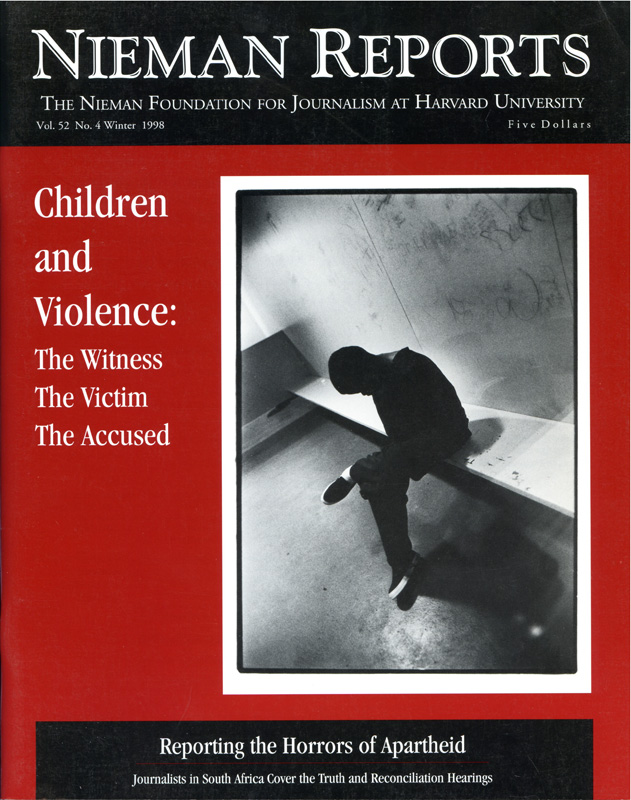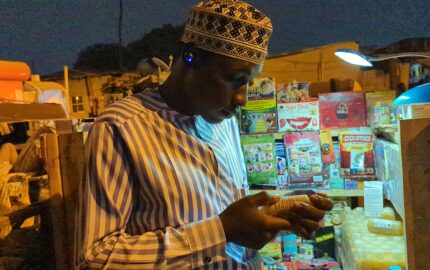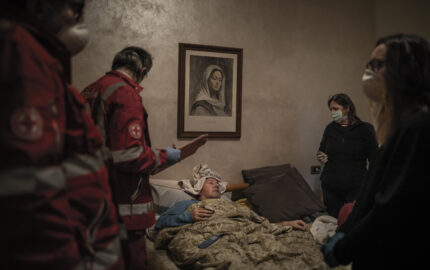
The actual reason why Vrye Weekblad collapsed was because of the work du Preez and his colleagues on the newspapers, like Jacques Pauw, had put into exposing apartheid’s murderers. Given his knowledge about many of the cases that would come before the Commission, du Preez had a head start on any other candidate to lead our coverage. As Executive Producer, du Preez was asked to put a small team together to report on the Commission’s hearings live for a week and thereafter to put together a weekly one-hour special report on the Commission. The costs of such coverage were enormous, so we had to find an affordable way of covering the Commission’s hearings. Initially, du Preez assembled a team of five producers, including himself. (Although the racial composition was not an important consideration, the team was made up of three blacks and two whites.)
That first week in April 1996, South Africans sat spellbound as we broadcast seven hours a day of the hearings. “The Truth Commission hearings were perfect for television journalism,” du Preez says. “It was not a story about politicians—it was about the way ordinary men, women and children felt about the horrors of apartheid. The TV cameras could take the close-ups of these feelings into every living room in the country.”
During those first five days of continuous coverage, from Monday to Friday, we carried the testimony of the widows of the Pebco Three and the Cradock Four, community leaders who had been abducted by security police and brutally killed. Nomhle Mohapi, whose young husband Mapetla, a friend of Steve Biko’s, was killed in police detention, also told her story, and the Commission also heard the other side, from relatives of the victims of the Azanian (People’s) Liberation Army’s attacks on a church and on a clubhouse.
What finally wrenched emotions during that remarkable week was the special report broadcast on Sunday night in which a former security policeman, Joe Mamasela, who had defected from the ANC, confessed on camera to killing more than 30 people. Many a stomach turned as he told, sometimes with a smile playing on his face, how he and his colleagues had butchered a well-known lawyer on a soccer field and how they had kidnapped and killed the Cradock Four.
“For the first time, the nation acknowledged the victims,” du Preez says. “They told us that when they gave their evidence, they knew they were not talking just to the commissioners, but they were talking to the whole nation. That was the impact of the TV coverage.”
The first week we used a full outside broadcast team with a technical team of about 12 and the five producers. This cost us R24 000 (U.S. $4,495) a day. We had to find a less costly way of doing it if we were going to be able to continue relaying these pictures and testimony to distant viewers. Du Preez and his team suggested that we scale down to two cameras and a switcher and recorder for each hearing. The producer would sit behind the monitor, directing the cameras and recording what he wanted from the hearing. The costs came down to less than R4 000 (U.S. $749) a day.
Our material costs were cut, but the human toll was huge.
On a Sunday, the producers flew out of Johannesburg to the place where the hearings were taking place. All week they would sit through hour upon hour of emotional exchanges, then return to Johannesburg on Friday night and on Saturday work deep into the night editing material to broadcast the special report on Sunday. Then they’d fly out again to begin the cycle anew. It was punishing work, physically and emotionally.
The first team disintegrated after three weeks. One of the producers actually left TV work altogether. The second team lasted through to the end, a total of 14 months, from April 1996 to June 1998.
Very early in the process, I met with the team and suggested that we employ a therapist to help them deal with the torrent of emotions to which they would be exposed at the hearings. In hindsight, du Preez regrets that they did not take up the offer: “We played macho and had to pay for it.” He had two heart attacks this year, and another member of the team has broken down and is getting therapy now.
It would have been better if we could have had a bigger team that worked two weeks on and a week off. Unfortunately, we could not raise extra funding, so we had to do our best with the limited resources. The SABC raises most of its income from advertising, but there was no advertising around the programs we did of the hearings. No business wanted to see its name sandwiched between vivid descriptions of torture and murder. The government, which was very keen on the coverage and hopes for reconciliation at the end of the process, would not subsidize our broadcasts. We were also unable to raise international donations in the manner in which SABC Radio did. Their live broadcasts of the hearings on Radio 2000 were subsidized by international donors.
“We were driven by our commitment to the story,” du Preez says. “Most of the team were young and inexperienced in television journalism. But they felt they owed it to South Africa to tell the story. This is where our roles as journalists were blurred into our roles as citizens. We felt it was a massive privilege to record our history for our children and grandchildren.” He remembers a conversation with a BBC producer who was brought in as a consultant to the hearings: “He couldn’t believe that only the five of us and two camera people produced the one-hour program every Sunday. He said the BBC would use between 25 and 40 people to produce such a program.”
The team encountered serious ethical issues during the two years it covered the hearings. As du Preez explains, “We could have sensationalized our coverage. We were very close to the Commission, so we could have done stories on the conflicts among the commissioners. We decided early on that our responsibility was to popularize the process and to accept that the Commission was more important than the commissioners. We thus ignored stories about the huge fights among the commissioners and concentrated on telling the stories of the victims of human rights violations.
“We also went beyond just telling the story: we actively encouraged the process of reconciliation started by the Commission. We brought victims and perpetrators together in a way that the Commission couldn’t do. In one instance, for example, we brought a boy face to face with the policeman who murdered his parents. Security policeman Paul van Vuuren, who has confessed to scores of murders, shot Tshidiso Motase’s parents dead in front of him when he was only four. Tshidiso was 14 when we did the program.
“First we spoke to the TRC psychologists and asked for advice before the encounter. We then took van Vuuren to meet the boy in the village of Hammanskraal.
“The boy told van Vuuren: ‘You don’t expect me to forgive you.’
“Van Vuuren replied: ‘Don’t ask me to say I’m sorry.’
“The cameras captured the tense moments. It all ended with Tshidiso telling van Vuuren that he now lived with his grandmother and if she died, he would come live with him as he would then be truly an orphan. Van Vuuren’s response was, ‘Okay, you come live with me as my son.’”
As du Preez reminds us, “We were making the truth a South African burden and taking it into people’s homes.”
The economics of covering this story have won. Even though the human rights hearings are over and the report released, the amnesty hearings are continuing. However, SABC Television News has scaled back to the point of a minute and a half a night in the news bulletins. But it still records every hearing with the intent of donating the footage to the National Archives in Pretoria. The hope is that in the years to come, our children and their grandchildren will be able to get to the archives and call up the evidence and truly understand what it was like for previous generations to live under apartheid.
The SABC is proud of its contribution. “We’ve won a few awards because of our coverage, but that is not important. What is important is that this has been the greatest moment in our journalistic career,” says du Preez.
But there were some moments of personal discovery, as well. In covering the hearings, du Preez learned that the man who had sued his publication and managed to shut it down was in fact one of those responsible for the poisoning and killing of anti-apartheid activists. “At first I felt angry. But then I felt a chapter that was incomplete in my life came to a close. All these years I was not a rebellious Afrikaner who opposed my tribe. I now feel a sense of satisfaction because I have been vindicated.”
Joe Thloloe is former Editor in Chief of SABC Television News. He was a 1988 Nieman Fellow and was for many years Managing Editor of The Sowetan, South Africa’s largest circulation daily newspaper. He is now Executive Director of MountainTop Experience (Pty) Ltd, a management and training consultancy in Johannesburg.


